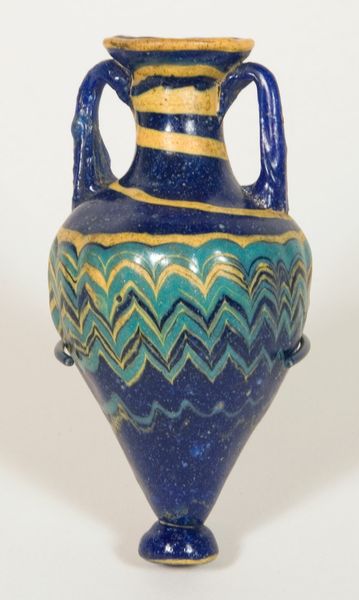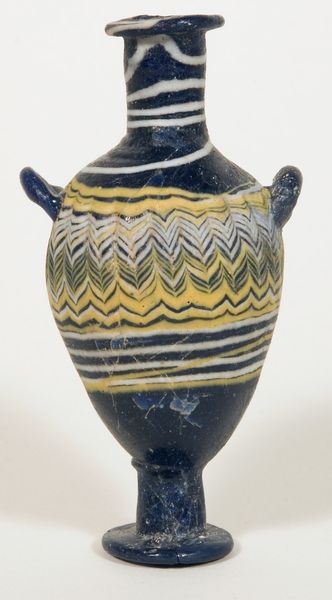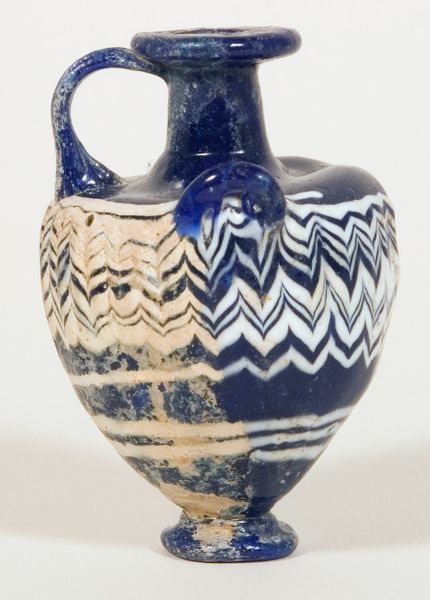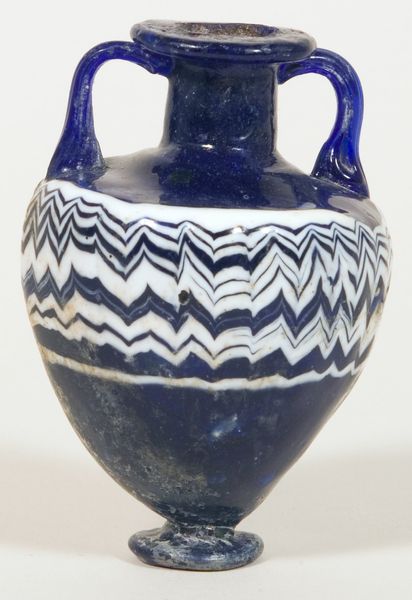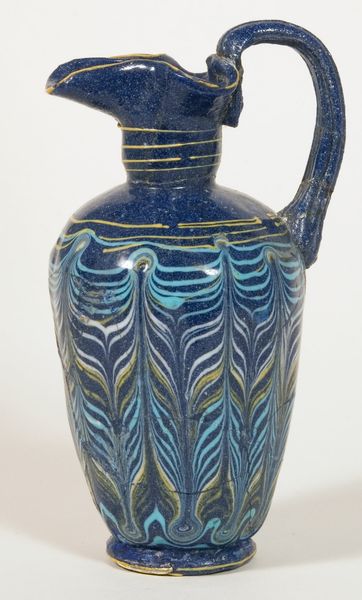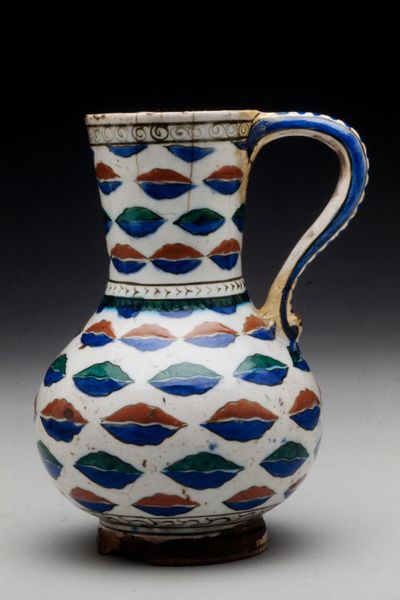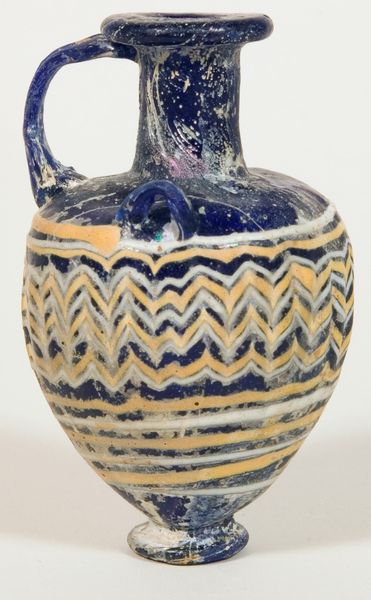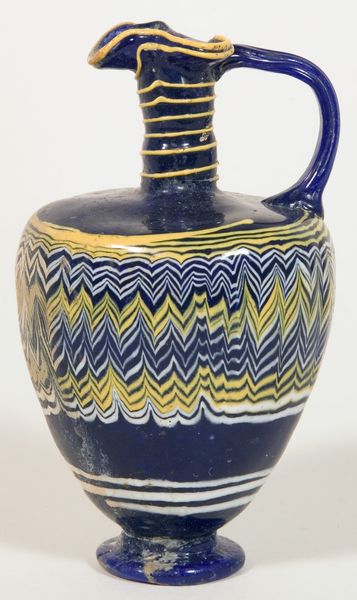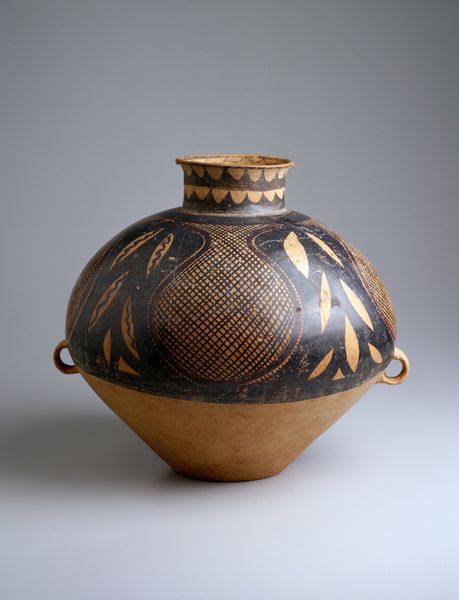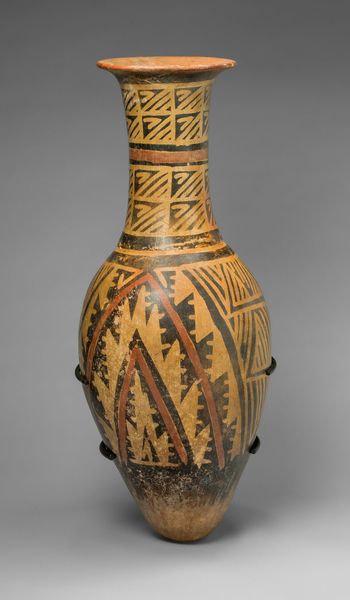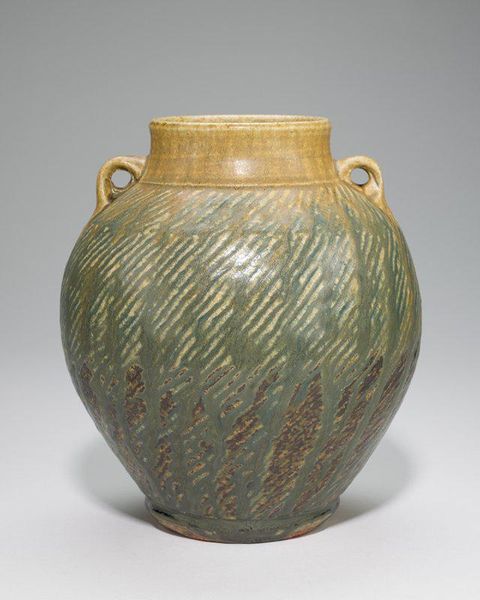
Amphoriskos (Container for Oil) c. mid 2th century
0:00
0:00
glass, sculpture
#
glass
#
geometric
#
ancient-mediterranean
#
sculpture
#
abstraction
#
islamic-art
Dimensions: 14.4 × 6 × 5.5 cm (5 5/8 × 2 3/8 × 2 1/8 in.)
Copyright: Public Domain
Editor: Here we have an Amphoriskos, or Container for Oil, crafted around the mid-2nd century in the Ancient Eastern Mediterranean. It's glass, beautifully decorated with these horizontal stripes and wavy lines. It strikes me as both functional and quite elegant. What do you make of it? Curator: Well, looking at this object, it is hard not to think about the political economy of the Roman Empire and the trade routes that enabled such luxury items to circulate. Imagine this piece on display in a wealthy Roman villa. Editor: The colours do suggest something luxurious, like something prized. Curator: Precisely. Its aesthetic qualities, such as the layering of glass and striking colour palette, were accessible only to those with means, signifying status and taste. This, of course, affects how we, in the present, perceive this "Container for Oil". Do you see it as "just" an everyday object? Editor: No, not really. I mean, knowing it was for oil but designed with such care elevates it. It also makes me wonder, who was making these? What did their lives look like? Curator: An excellent question! Often these artisans remain anonymous to history, which reflects their lower social standing. Consider also how objects like this gain value as they're displayed in museums. They become symbols of ancient craftsmanship and culture. Editor: That's a good point. We often divorce these objects from the everyday life they came from when they're put on display. It becomes something entirely different. Curator: Exactly. What begins as a container is re-imagined as art. Editor: Thanks. I’ve learned a lot about how historical context transforms the object and affects its legacy.
Comments
No comments
Be the first to comment and join the conversation on the ultimate creative platform.
